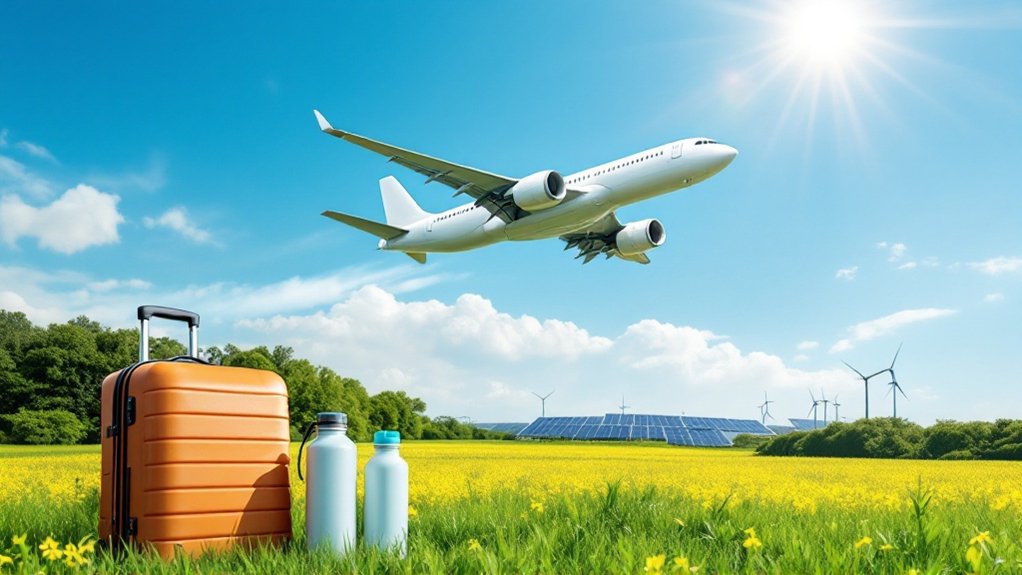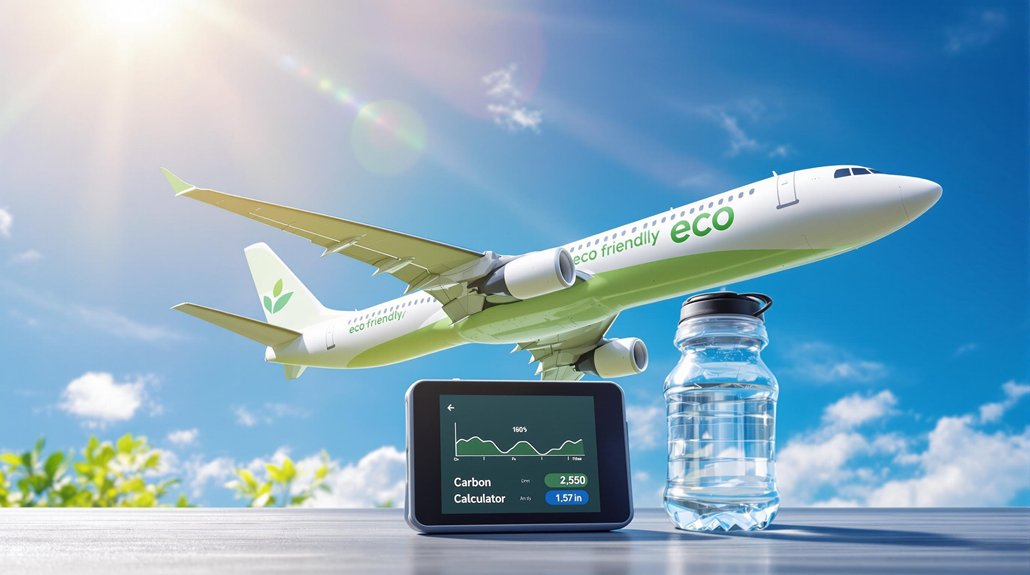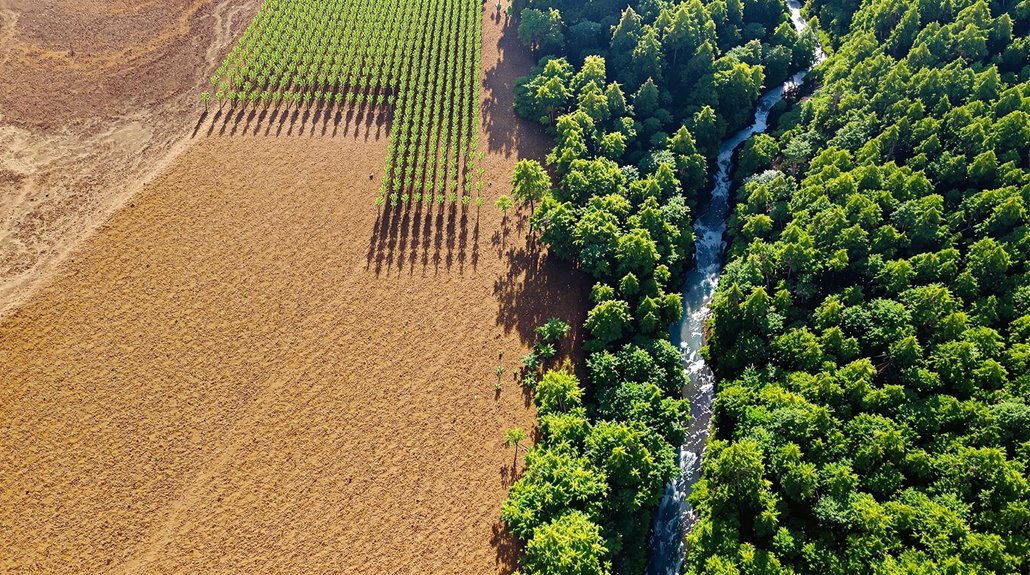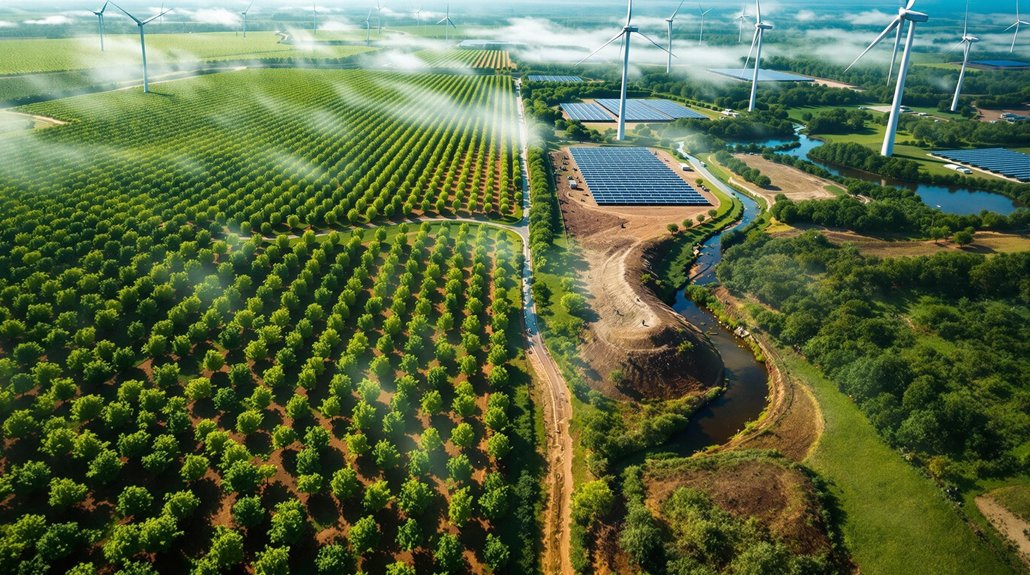Travelers can cut their airplane carbon footprint through several practical steps. Choosing airlines with newer, fuel-efficient fleets reduces emissions by up to 25%. Flying direct avoids extra takeoffs and landings, which account for 25% of flight emissions. Economy class spreads carbon impact across more passengers, while packing light lowers fuel needs. Carbon offset programs and selecting vegetarian meals offer additional benefits. These simple choices make a significant difference in aviation’s environmental impact.

While air travel contributes considerably to global carbon emissions, passengers can take several steps to minimize their environmental impact. Studies show flying creates a significant carbon footprint, but travelers aren’t powerless to make changes. The choices made before, during, and after flights can help reduce harmful emissions.
Air travel’s environmental impact can be significantly reduced through mindful choices by passengers before, during, and after flights.
Selecting airlines with newer, fuel-efficient fleets is one effective strategy. Modern aircraft like the A320neo and Boeing 787 use 15-20% less fuel than older models. Airlines including Delta, United, and JetBlue are investing in these efficient planes, which can cut CO2 emissions by up to 25% per passenger. Some carriers publish their fleet’s average age and efficiency data to help consumers make informed choices.
Flying direct whenever possible also reduces emissions. Take-offs and landings account for 25% of flight emissions, so avoiding connections helps. Direct routes can be optimized using sophisticated traffic control systems that allow more fuel-efficient flight profiles. Direct flights can lower a passenger’s carbon footprint by up to 50% by reducing total distance and eliminating extra fuel used during multiple take-offs. For longer journeys, nonstop flights are particularly important for minimizing your carbon impact compared to routes with connections.
Economy class seats spread emissions across more travelers. First class produces nine times more emissions per passenger than economy, while business class creates three times more. This difference occurs because premium seats take up more space and often allow more luggage, increasing the plane’s weight.
Packing light makes a difference too. Reducing luggage weight by 15kg can lower emissions by 50-100kg on a 4.5-hour flight. Lighter planes need less fuel to operate. Airlines like Emirates use eco-efficient technologies during taxiing and landing to further minimize fuel consumption.
Many airlines offer carbon offset programs during booking. These investments support renewable energy, reforestation, and emissions reduction projects. Offset costs typically range from $10-$40 for long-haul flights.
Sustainable Aviation Fuel (SAF) initiatives are worth supporting. These fuels can reduce lifecycle CO2 emissions by up to 80% compared to conventional jet fuel. Airlines like United, KLM, and SAS are investing in SAF development.
Small choices during flights help too. Using reusable water bottles, selecting vegetarian meals, declining unnecessary single-use items, and using digital boarding passes all reduce waste and environmental impact.
Frequently Asked Questions
Do Airlines Offset Carbon Emissions Automatically With Ticket Purchases?
Some airlines do offset carbon emissions automatically with ticket purchases.
EasyJet, Air France, British Airways, JetBlue, and Scandinavian Airlines have automatic offset programs for specific routes.
Most carriers, however, only offer voluntary opt-in programs during booking, with just 1-3% of passengers participating.
The industry lacks standardization, with some airlines now shifting toward incorporating offset costs directly into ticket prices.
Which Airplanes or Aircraft Models Are the Most Fuel-Efficient?
The most fuel-efficient commercial jets include the Boeing 787-9 Dreamliner using 2.31 L/100km per passenger and the Airbus A350-900 at 2.39 L/100km.
For regional aircraft, the ATR-72-600 leads at 2.17 L/100km per passenger. The Airbus A220-300 and A321neo also rank highly for efficiency.
These aircraft achieve better fuel economy through advanced aerodynamics, lightweight materials, and more efficient engines like high-bypass turbofans and geared turbofans.
How Much CO2 Does an Average International Flight Produce?
An average international flight produces varying amounts of CO2 depending on distance. Short-haul international flights emit about 90 kg per passenger, while medium-haul flights generate 200-300 kg. Long-haul flights produce 400-600 kg per passenger.
First and business class travelers emit 2-4 times more than economy passengers. Factors affecting emissions include aircraft type, route efficiency, and passenger load.
One transatlantic round-trip flight emits approximately 1.6 tonnes of CO2.
Can I Bring My Own Sustainable Items Onboard?
Travelers can bring many sustainable items onboard flights.
Empty reusable water bottles, bamboo utensils, cloth napkins, and solid toiletries are all allowed in carry-on luggage. TSA permits reusable toiletry containers under 3.4 oz/100ml.
Solar chargers, reusable bags, and digital boarding passes also reduce waste. Metal utensils may need extra screening. Package-free snacks in reusable containers are permitted.
However, TSA officers have final say on all items.
Do Different Airports Have Varying Environmental Impacts?
Different airports have widely varying environmental impacts.
Large urban airports affect more people with noise and air pollution, while rural ones may disturb more wildlife.
Coastal airports face water pollution challenges.
Traffic volume and aircraft types also matter – busier airports with more jets produce higher emissions.
Environmental practices differ too, with some facilities implementing better recycling, renewable energy, and water conservation programs than others.









